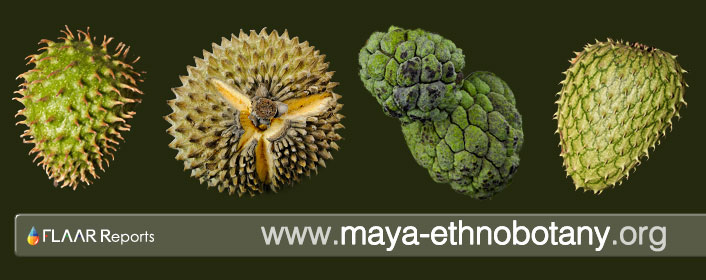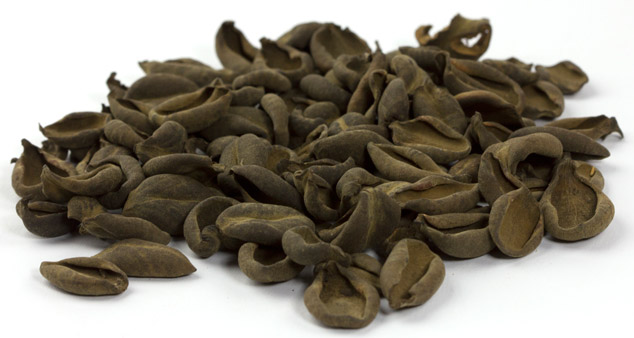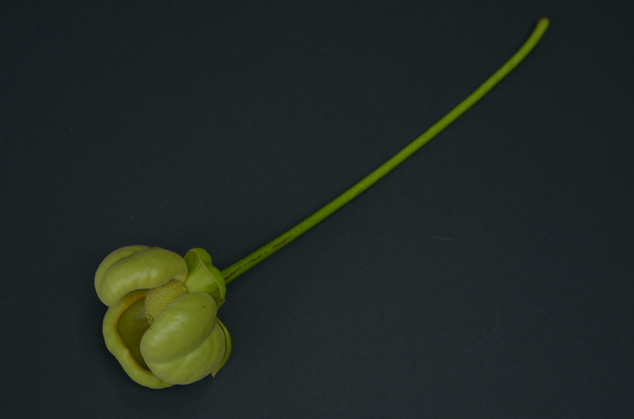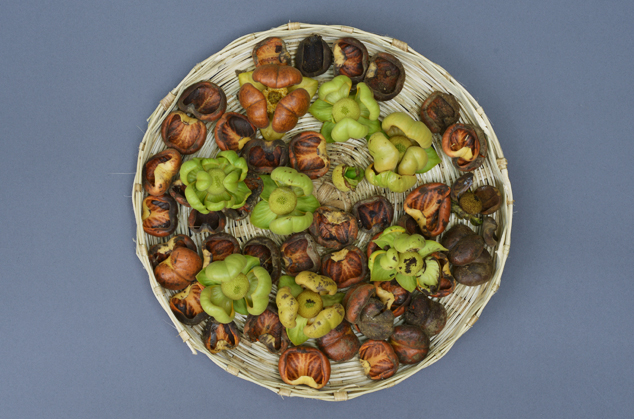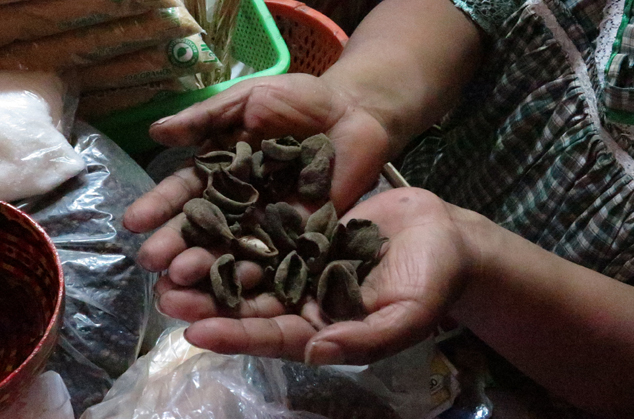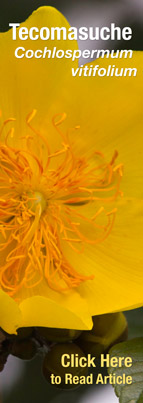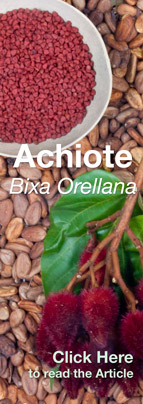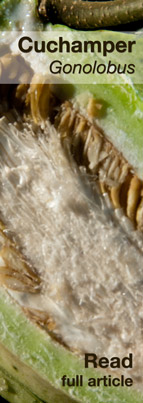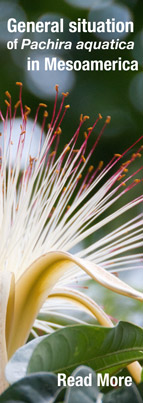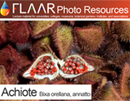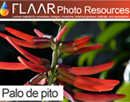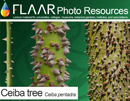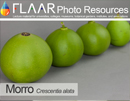When time and funding permit, each flower (each plant species) will have its own page, and its own PDF, and eventually its own PPT so that professors and students have plenty of material on Guatemala (and Honduras, etc) to study.
Heliconia adflexa, Coban, Guatemala, Hotel Monja Blanca, FLAAR, by Nicholas Hellmuth
This space is for flowers
we have recently found and photographed.
|
| Share
|
| Cymbopetalum penduliflorum orejuela ear flower |
|
In her informative book on chocolate, Sophie Coe comments on orejuela hueinacaztli, the thick, ear-shaped petal of the flower of Cymbopetalum pendulifolorum, a tree of the Annonaceae or custard-apple family, which grows in the tropical lowland forests of Veracruz, Oazaca, and Chiapas; this was one of the most valued products brought back by the pochtexa merchants from the expeditions. It is a confusing plant, because it has a least three Nahuatl names: it may be called hueinacaztli ("great ear"), teonacaztli ("divine ear"), or xochinacaztli ("flowry ear"). The distinguishing feature is the ending nacaztli, meaning "ear."...Be that is at may, Cymbopetalum penduliflorum was the premier chocolate flavor among the Aztecs...What did this flower taste like, once it have been turned into powder and added to the fine cacao? Sahagun as usual cautions against taking too much of it, warning that excess could lead to drunkenness...
Cymbopetalum penduliflorum, Orejuela The flower of this tree is renowned for its aromatic spice fragrance. The dried flower is visible in large amounts at most local markets in Guatemala City, Antigua, and Cobán. But we have not yet found one single person who can tell us where the tree grows or when it flowers.
Which authors first list this spice? Most of the scientifically oriented authors of books on chocolate have given the names and dates of scores and scores of ethnohistorical records of the use of Cymbopetalum penduliflorum, Orejuela. Ironically, back in the 17th through 19th centuries, copying from original sources (often without citation) was as rife as it is on the Internet today in the 21st century. Duran lists Xochinacaztli, ear flower, as flavoring Diego Duran lists (Heyden 1994:244, footnote 3).
DURAN, Diego and Doris HEYDEN (editor/translator) 1994 The History of the Indies of New Spain. University of Oklahoma Press. Used to flavor tobacco The Aztecs flavored their tobacco with
List of species of in the Mesoamerican area What often surprises me is to learn that a plant I have been working on is in the same genus as a dozen other common plants (but the plant I am working on shows (to me, a lay person) not one single characteristic that would have given me a suspicion that it was a member of that other family. So to learn that Cymbopetalum penduliflorum, Orejuela, is a member of the Annonaceae family (with all the Annona species (anona and cherimoya in local Spanish) was an unexpected surprise. The Annonaceae family has over one hundred genera. Synonyms
Common names Orejuela or orejuelo in Spanish. It is typical in Spanish for trees to have a male ending and a female ending depending on contex (or in the case of us from another country) a misunderstanding of the difference in meaning of a tree with male vs female ending). A closely related species, C. stenophyllum, Donnell Smith, was discovered by Capt. John Donnell Smith in the Dept. of Quetzaltenango.
Habitat of Cymbopetalum penduliflorum in the Mesoamerican area You would expect to find orejuela in Guatemala, Mexico, and Belize, among other places. In Mexico it occurs in Campeche, Chiapas, Tabasco, plus Oaxaca and Veracruz (Bye and Linares 1990:161) plus Zihuatanejo de Azueta, Guerrero. http://unibio.unam.mx/collections/specimens/urn/IBUNAM:MEXU:PVsn21910 Northern Guatemala and southern Mexican border area, which means Peten and Chiapas. Also known for Belize (www.globaltrees.org/downloads/Anexo%202%20Arboles%20Guatemala.pdf) There is a Rio El Guanacaste in the Quetzaltenango area but the Guanacaste tree is actually another tree altogether. I rarely see the name Guanacaste used for the orejuela tree in Guatemala. Guanacaste is often included in the discussion of Cymbopetalum penduliflorum I know the Guanacaste tree due to its large size and its use as lumber. Guanacaste is tubroo in Belize. The seed pods are called "monkey's ear tree". Guanacaste is the national tree of Costa Rica. In other countries the tree is known as Elephant Ear Tree. But the scientific name of Guanacaste the lumber tree is Enterolobium cyclocarpum. Ear flower is Cymbopetalum penduliflorum. The confusion is that the entire pod of a Guanacaste tree is the same of an ear. With the cacao flavoring, it is the individual "petel" which is ear-shaped. The entire pod is not ear-shaped whatsoever. In other words, either remove the word Guanacaste from the description of ear-flower for cacao flavoring, or at least have a footnote to this FLAAR Reports page that the two "ear" items have no relation to each other: Guanacaste seeds are not used for flavoring cacao (to my knowledge). Tabulation of indigenous terms for orejuela In Mesoamerican languages Hueynacaztli, Manuscrit Badianus 56v Teōnacaztli, Sahagun 11,120 and Sahagun 11,209 Cymbopetalum penduliflorum in Aztec markets Ear flower is mentioned as one of the major products sold in Aztec markets. Bye and Linares raise the valid question of why, if ear flower was so common in Aztec markets of the pre-conquest era, why did only vanilla survive as a cacao flavoring today (1990:164). BYE, Robert A., Jr and Edelmira LINARES 1990 Mexican Market Plants of 16th Century. I. Plants recorded in Historia Natural de Nueva Espana. J. Ethnobio. 10(2):151-168. Winter 1990.
Ear flower is mentioned as one of the major products sold in Aztec markets. Diego Duran lists (Heyden 1994:244, footnote 3).
Separately the editor has a footnote on page 179: Hueynacaxtli, Cymbopetalum penduliflorum, an aromatic plant used in the preparation of chocolate. The editor takes this from Manuscrit Badianus 56v, but does not cite the origin in her footnote.
Bibliography on Cymbopetalum penduliflorumPertinent web sites which mention Orejuela of Mesoamerica http://etc.usf.edu/clipart/galleries/plants/flowers_shrubs_c.php?page=30&term University of South Florida, clipart service, excellent botanical drawings. www.mayacodices.org/searchWiz.asp search engine for Madrid Codex. www.plantsystematics.org/taxpage/0/genus/Cymbopetalum.html Has five photographs of various Cymbopetalum species flowers. http://sanders5.ucr.edu/arboles_mainmenu.php?numero=29 General web site on "Arboles Tropicales Comunes del Area Maya" with basic description and photographs. University of California, Riverside. First posted March 11, 2013. |
Parque Nacional Yaxha, Nakum and Naranjo
Carnivorous Plants
Plants of Municipio de Livingston, Izabal
- Acrostichum danaeifolium, giant leather ferns
- Bellucia Pentamera
- Bibliography on Grias cauliflora
- Bibliography on Licania platypus
- Bibliography on Mangle negro (Avicennia germinans) L.
- Bibliography on Montriacardia arborescens
- Bibliography on Typha domingensis and Thypha latifolia
- Conocarpus erectus, white mangrove
- Edible Wetlands Plants, Hotel Tortugal
- Heliconia latispatha
- Heliconia wagneriana
- Manicaria saccifera Confra palm
- Neotropical trees of Guatemala need protection
- Nymphoides indica, waterlily flowers
- Pachira aquatica, zapoton
- Bibliography on Pithecellobium Mart., Neotropical trees of Mesoamerica
Ecosystems, Wetlands Aquatic Plants
Smartphone Camera Reviews
Bushes and small trees
Fungi and Lichens
Orchids
- Bibliography Bletia purpurea, aquatic orchid
- Bibliography, Epidendrum radicans
- Bibliography on Habenaria Orchids from Yaxha
- Bibliography, Lycaste virginalis var. alba.
- Bibliography, Macroclinium bicolor
- Bibliography, Prosthechea cochleata
- Bibliography Sobralia macrantha, Lirio de San Juan
- Bibliography, Sobralia xantholeuca
- Bibliography on Terrestrial shade orchids from Guatemala
- Bibliography on Terrestrial sunny orchids from Guatemala
Botanical Terms
Maya and Aztec flavorings for cacao, cocoa, chocolate
- Achiote, Bixa orellana
- Bibliography on Achiote, Bixa orellana
- Bibliography on Esquisúchil, Bourreria huanita
- Bourreria huanita
- Cassia grandis, bucut
- Chile Chocolate
- Chile Chocolate (Capsicum annuum var accuminatum)
- Chiranthodendron pentadactylon
- Cymbopetalum penduliflorum
- Guazuma ulmifolia
- Haematoxylum brasiletto
- Piper auritum, hoja santa
- Piper species
- Quararibea funebris
- Sterculia apetala, castaño
- Tagetes sp., Marigold
- Talauma, a variant of Magnolia
- Vanilla orchid
- Virola and nutmeg
Cacao, cocoa, chocolate
Consulting cacao & Theobroma species
Tobacco Ingredients of Aztec & Maya
Trees of Mesoamerica
- Bibliography on Acacia dolichostachya, Wild tamarind
- Bibliography, Bellucia costaricensis
- Bibliography, Bucida buceras
- Bibliography on Coccoloba belizensis Standl.
- Bibliography on Cojoba sp. and Cojoba arborea
- Bibliography, Ficus.
- Bibliography on Haematoxylum campechianum and H. brasiletto
- Bibliography on Hibiscus pernambucensis
- Bibliography on Ipomea murucoides
- Bibliography on Lacmellea standleyi, lechemiel
- Bibliography on Leucaena leucocephala
- Bibliography on mangle rojo (Rhizophora mangle)
- Bibliography on Manzanillo, Alseis yucatanensis Standl.
- Bibliography on Matilisguate, Tabebuia rosea
- Mangrove swamp Trees
- Bibliography on Ruagea insignis
- Bibliography on Pterocarpus officinalis
Bombacaceae, Bombacoideae
Tropical Fruits of the Maya
- Avocado Hass
- Bibliography on Coloc, Talisia floresii
- Bibliography, Dichogamy of avocado species
- Bibliography on Guayo, Talisia olivaeformis
- Bibliography on Laetia thamnia, Bakelac
- Bibliography on Maracuyá, Passiflora quadrangularis L.
- Bibliography on Punica granatum L., Granada
- Cashew
- Cuajilote, Parmentiera aculeata
- Granada
- Guanabas and Annonas
- Guava, Guayaba, Psidium guajava L
- Introduction to Papaya
- Nance a fruit of prehispanic Guatemala
- Passion flowers and fruits
- Passion flower, giant fruit
- Talisia floresii, Sapindaceae
- Carica Papaya Bibliography
Tropical Nuts
Spices, condiments, food coloring
Medicinal Plants
- Aristolochia, The largest flower in Guatemala, Bibliography
- Asclepias curassavica, bibliography
- Bibliography on Ciricote, Cordia dodecandra
- Bibliography on Contrahierba, Dorstenia contrajerva
- Bibliography on Falso hibisco, Malvaviscus arboreus
- Bibliography on Huele de noche, Cestrum nocturnum
- Bibliography on Lirio araña, Hymenocallis littoralis
- Bibliography on Roble Prieto, Ehretia tinifolia
- Bibliography, Tithonia diversifolia
- Canak
- Calliandra general info
- Guava, Guayaba
- Magnolia and Taluma
- Mayan medicinal plants
- Piper
- Tecomasuche, Coclospermum vitifolium
- Bibliography on Sufricay, Malmea depressa
- Bibliography on Wigandia urens
Underutilized edible plants
Edible Plants of the Mayan World
- Acacia, subin, bullhorn acacia
- Bibliography, Annona muricata
- Bibliography, Annona purpurea
- Bibliography, Annona reticulata
- Bibliography on Chipilín, Crotalaria longirostrata
- Bibliography on Chirimoya, Annona squamosa
- Bernoullia flammea
- Canna indica, tamale wrap
- Cuchamper, Gonolobus
- Guava, Guayaba
- Bibliography, Gonobolus sp.
- Bibliography, Parmentiera aculeata
- Pacaya palm Chamaedorea tepejilote
- Split leaf philodendron, Monstera deliciosa
Plants and trees used to produce incense
Utilitarian Plants
- Bibliography, Acacia farnesiana
- Bibliography on Aechmea bromeliifolia
- Bibliography on Agave americana
- Bibliography, native Agave species from Guatemala
- Bibliography on Anthurium crassinervium (Jacq.) Schott
- Bibliography on Balsa, Ochroma pyramidale
- Bibliography on Bamboo, Guadua longifolia (E.Fourn) R.W.Pohl
- Bibliography, Crescentia alata
- Bibliography, Crescentia cujete
- Bibliography on Hule, Castilla elastica
- Blepharidium guatemalense, irayol blanco
- Crescentia alata, Crescentia cujete
- Tecomasuche, Coclospermum vitifolium
- Bibliography on Coxte, Colubrina arborescens
- Bibliography on Madre cacao, Gliricidia sepium
- Bibliography on Tillandsia usneoides
